If you think about it, true blue flowers are quite rare; nature seems to favour a sort of washed out magenta or lilac. The flowers listed by nurserymen as blue are very often shades of mauve or purple. In fact there is no blue pigment in the plant world and colours that appear blue to us are actually permutations of violet or purple. To make flowers appear blue, plants carry out some sort of biochemical magic using red pigments called anthocyanins. I have read the science but I can’t get my head round it, so it is magic to me. Blue flowers are universally appealing, and that is why the obsessive search goes on for a blue rose and we have the hideous crime of dyed carnations and even orchids that you sometimes see for sale in supermarkets. The perpetrators of this crime against plants need locking up. But naturally blue flowers are considered sophisticated and appeal to the plant snob lurking in all gardeners. But it is not just snobbery is it? Pure blue flowers seem to touch a chord in all of us.
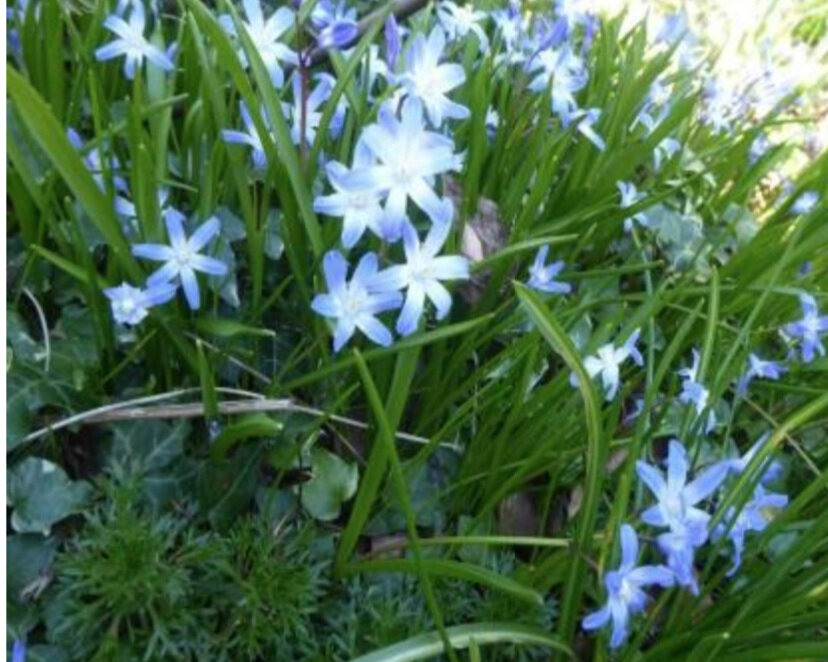
The blue flowers of spring are particularly magical. Years ago I sorted out the confusion in my mind about the names of the most gorgeous early-spring blue flowers; the little bells of Scilla lucilliae and the starry flowers of Chionodoxa forbesii, by reminding myself that chionodoxas don’t hang their heads, but have their chins up; I know it’s not quite chin, but if you slur ‘chion’ a bit it sounds like it. Chionodoxa is a lovely Greek word meaning the ‘Glory of the Snow’ which is a bit misleading as we don’t usually get snow in April. Anyway no matter where they point their chins the arrangement of their anthers and filaments are quite different if you look at them closely.
But now after getting my head round the differences, I find that Chionodoxas have been subsumed into the Scilla group anyway. There are some lovely flowers in the scilla family including Scilla peruviana which has flowers the colour of lapis lazuli and the giant scilla from Madeira, Scilla madierensis.
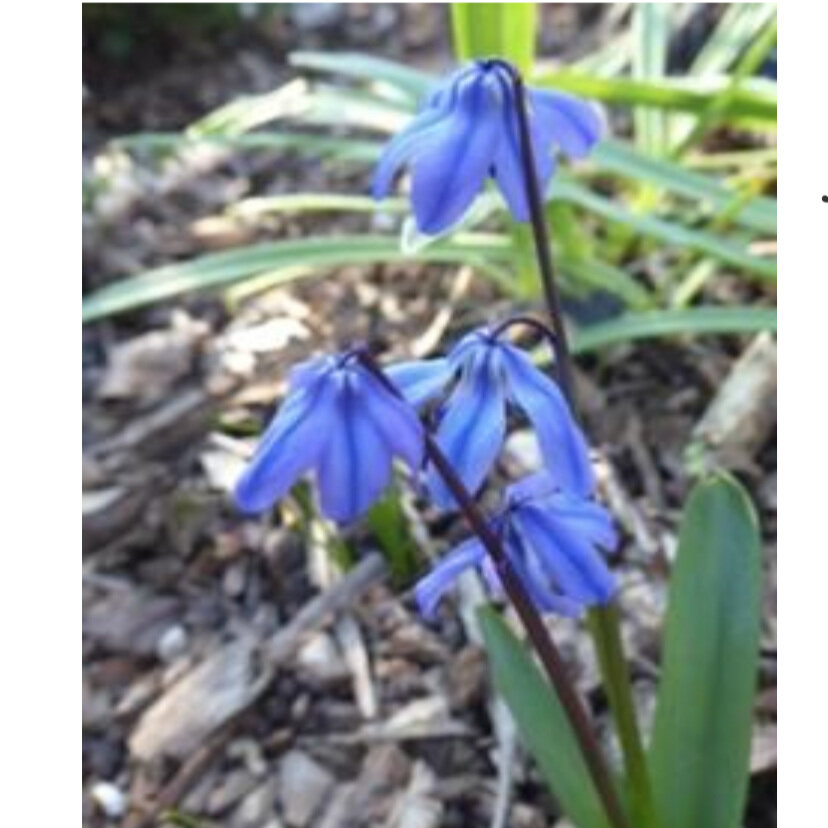
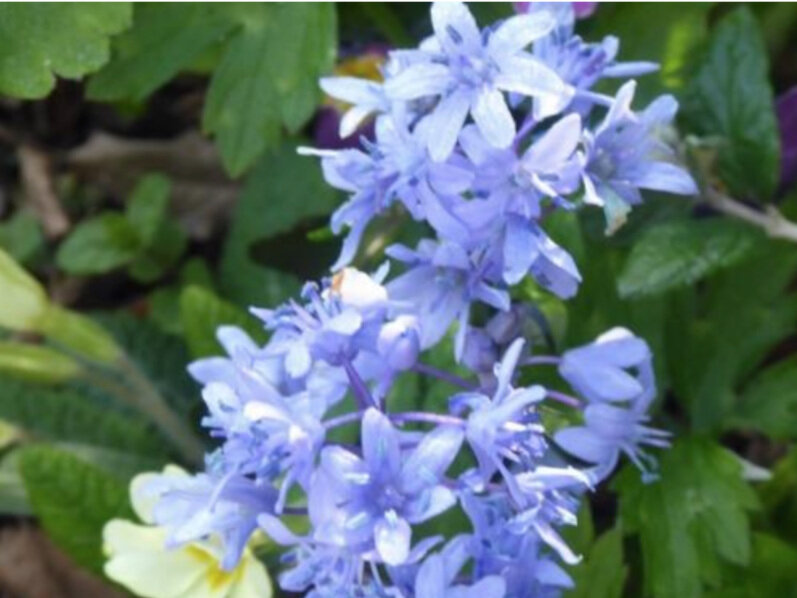
I love the pretty, starry flowers of the Turkish Squill, Scilla bithynica. They are produced in pyramidal racemes of starry flowers.
Still on the theme of sky blue flowers I have creeping carpets of Omphalodes cappadocica ‘Starry Eyes’. If this name is a bit of a mouthful for you, its common name is ‘Navelwort’ but I have no truck with common flower names or navels. This plant does best in dappled shade.
The flowers of Omphalodes cappadocica look rather like Forgetmenots as do those of Brunnera macrophylla. There are several varieties of brunnera with variegated leaves which make nice foliage plants all year round. I started off with ‘Jack Frost’, ‘Looking Glass’ and several others. They have all seeded around now so they are quite varied.
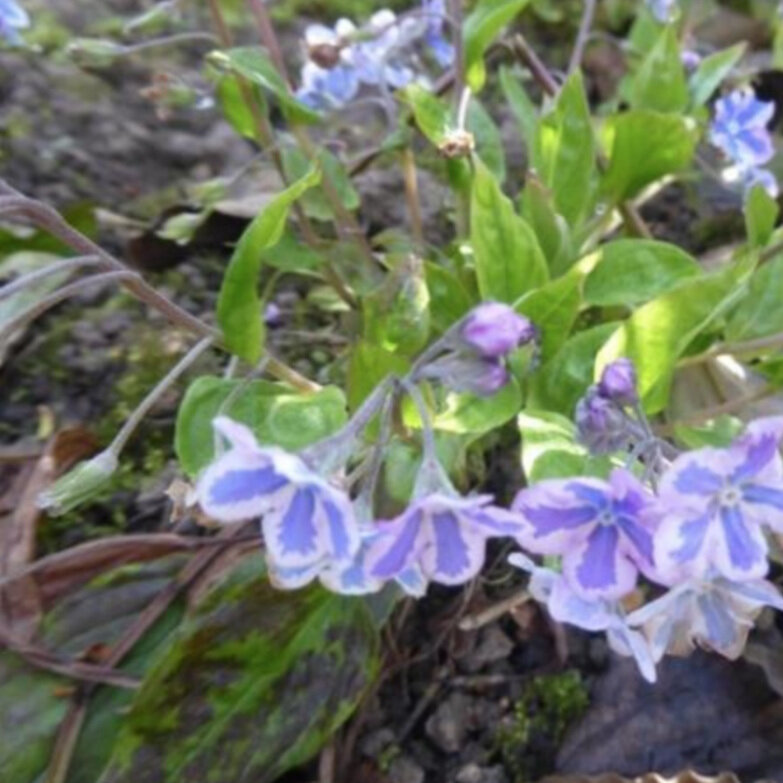
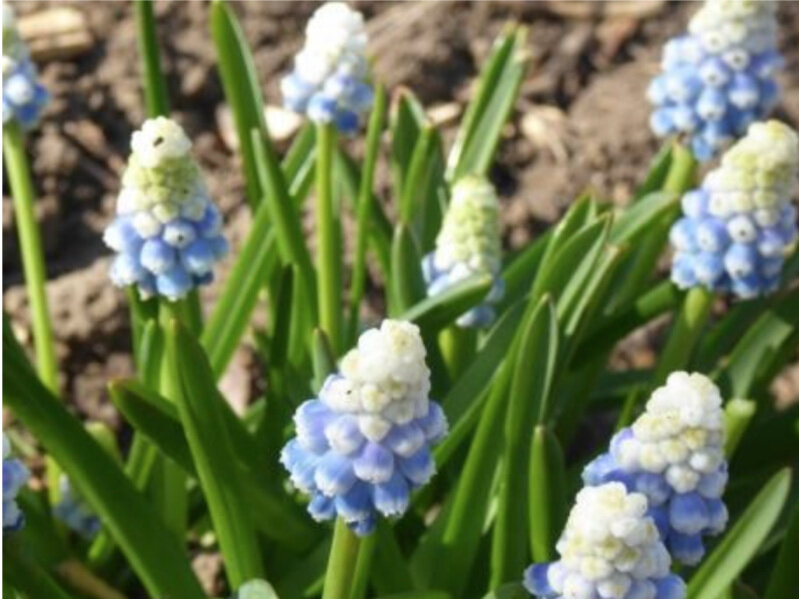
Grape Hyacinths spread around everywhere too and can become a nuisance but there are some very refined ones which stay in nice clumps without getting everywhere. Muscari armeniacum ‘Mountain Lady’ is a beautiful variety which is quite new, it has bicoloured flowers.
I have a lovely powder blue Grape Hyacinth which Jenny Robinson found in Cyprus, Muscari ‘Jenny Robinson’, but to confuse matters it is sometimes called ‘Baby’s Breath’. To confuse matters even more it is very similar to Muscari ‘Valerie Finnis. The only difference I can see is that Jenny has slightly broader, tidier leaves.
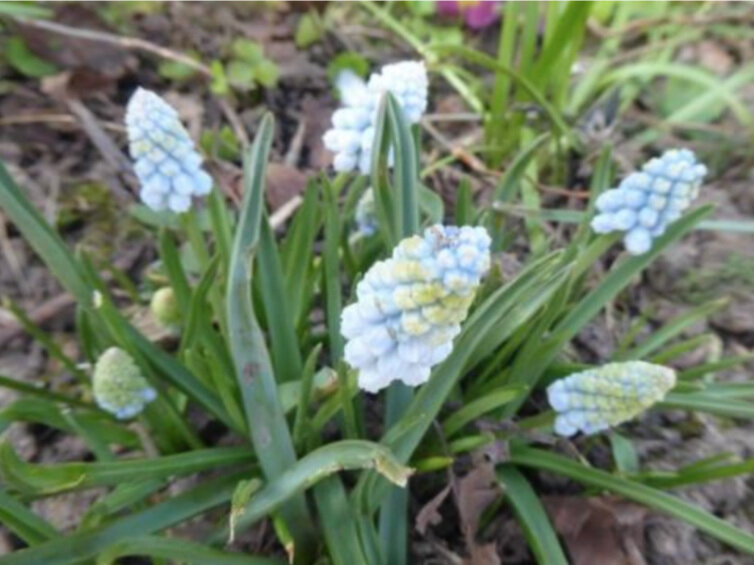
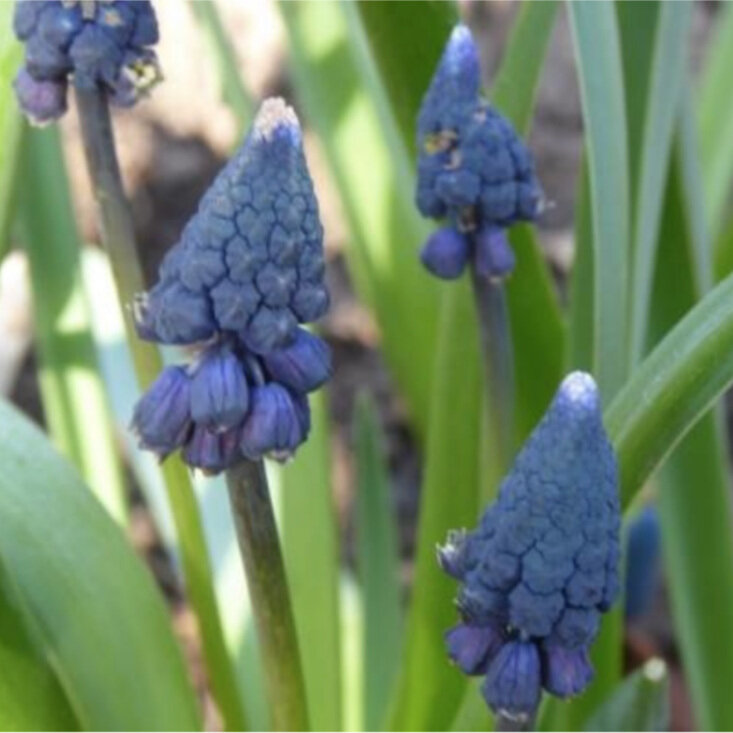
I am going to include ‘ Bellevalia pycnantha’ in with my ‘Muscari’ because it looks just like it and in fact it used to be called ‘Muscari paradoxum’. It is very dark and sophisticated. Of course there are many more true blue flowers that bloom in April. For instance, we have the onion scented, Ipheion uniflorum with starry blue flowers, the daisy flowers of Anemone blanda, the creeping speedwell, Veronica peduncularis ‘Georgia Blue’ , fabulous Hepatica transsilvatica, pulmonarias, blue primroses and probably lots more. For many people the yellows of daffodils and forsythia are the hallmarks of spring, but for me it is the advent of blue making little pools of light all round the garden.
Site developed by Essex Social Media Ltd.